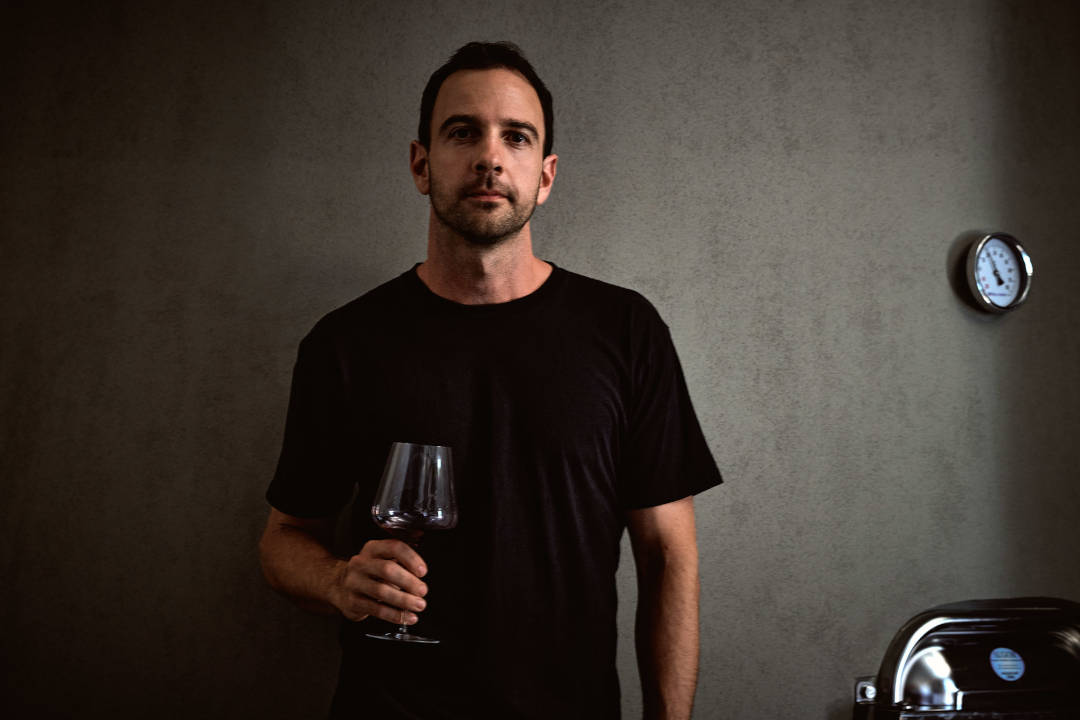ANDREW TRIO
WINEMAKER AT WAYFINDER WINES
“Experimentation is an important part of what we do, particularly when we’re working with new vineyards or clones.”
When did you realise you wanted to become a winemaker?
I was fortunate to have had an early start and studied winemaking straight out of high school. It suited my interests in art, science, food and wine, and offered an appealing balance of indoor and outdoor work. Looking back on it, I feel lucky to have found something that I enjoy so early on in life.
Please tell us about your career so far, including your education, work experience etc.
I started studying at UWA and transferred to the University of Adelaide for the second half of my degree, graduating in 2005. I worked my first vintage at Vasse Felix under Clive Otto and my second at Devil’s Lair under Stuart Pym. I went on to travel the world for several years, alternating northern and southern hemisphere vintages in New Zealand, California, Barossa, Germany, and occasionally back in Margaret River. My career developed in the US, and I spent two years in Sonoma Valley, followed by ten years in Washington State, as Head Winemaker at Corliss Estate. I moved back to West Australia and joined Overstory in 2020, and now oversee the winemaking across our two projects – Wayfinder in Margaret River and Small Wonder in Tasmania.
What do you love most about being a winemaker?
I love the seasonality of winemaking and the variety of work. I’m happiest when I’m working hands-on, in the cellar, close to the wines.
What is your favourite wine, and what food do you typically pair it with?
I tend to drink more savoury, herbaceous, earth-driven wines, so Bordeaux varieties like cabernet franc and cabernet sauvignon, and whole-bunch-ferment styles of syrah and pinot noir. This is what we drink when we cook at home, as it pairs well with Mediterranean and Middle Eastern-style food.
Is there a specific process you follow in developing a new wine?
Experimentation is an important part of what we do, particularly when we’re working with new vineyards or clones. It takes time and attention to understand what the site is capable of, and how its character is expressed in the wines it produces. We then benchmark the resulting wines against wines from top producers around the world, helping us narrow down a target style and dial in our approach to the winemaking.
Is there a specific vintage you are particularly proud of creating? Why?
Our wines get stronger every year. The 2024 wines are looking great in barrel, which is really pleasing considering how challenging the growing season was. We had to be patient and wait for phenolic maturity, which lagged sugar accumulation this year. The wines show depth and concentration, with relatively low alcohol levels.
Which of your own varieties do you typically indulge in?
We just finished building our new Small Wonder winery in Tasmania, so right now I’m drinking a lot of pinot, chardonnay, and sparkling wines. For Wayfinder, it’s usually chardonnay, cabernet franc and syrah.
Where do you see yourself in five years? How do you think your winemaking will evolve during this time?
We’re building a beautiful new winery for Wayfinder in Margaret River which we aim to have ready for the 2026 vintage. In five years, I’ll no doubt be focused on developing our wine program there, experimenting with new fermentation materials, processes and techniques. It’s an exciting time for us.

